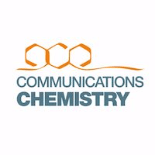
Communications Chemistry
Scope & Guideline
Integrating Ideas for a Greener Planet
Introduction
Aims and Scopes
- Interdisciplinary Research:
The journal promotes research that bridges various fields of chemistry, such as organic, inorganic, physical, and materials chemistry, allowing for comprehensive studies that address complex scientific challenges. - Innovative Methodologies:
A commitment to publishing novel experimental and computational techniques that enhance the capabilities of chemists to explore and manipulate chemical systems. - Focus on Sustainability:
Research that emphasizes sustainable practices and green chemistry solutions is a core area, reflecting the contemporary emphasis on environmental responsibility and resource efficiency. - Emerging Technologies:
The journal covers advancements in cutting-edge technologies, including machine learning and artificial intelligence applications in chemical research, showcasing how these tools can revolutionize the field. - Biochemical and Medicinal Chemistry:
A significant focus on research related to biochemistry and medicinal chemistry, including drug discovery and development, highlighting the journal's role in addressing health-related challenges. - Materials Science:
The publication of studies related to the design, synthesis, and application of new materials, particularly those with unique properties or functionalities, plays a crucial role in the journal's scope.
Trending and Emerging
- Machine Learning and AI Applications:
An increasing number of publications are utilizing machine learning and artificial intelligence to accelerate chemical discovery and optimization processes, indicating a transformative shift in research methodologies. - Sustainable and Green Chemistry:
Research addressing sustainability, including renewable energy and environmentally friendly materials, is on the rise, reflecting global priorities in combating climate change and promoting eco-friendly practices. - Biotechnology and Biocatalysis:
There is a growing trend towards utilizing biological systems and enzymes for chemical transformations, emphasizing the importance of biocatalysis in developing sustainable synthetic methods. - Nanotechnology and Nanoengineering:
The exploration of nanomaterials and their applications in various fields, including catalysis and drug delivery, is increasingly prominent, showcasing the interdisciplinary nature of modern chemical research. - Chemical Biology and Medicinal Chemistry:
An uptick in research related to chemical biology, including drug design, protein interactions, and disease mechanisms, underscores the journal's commitment to addressing health-related issues through chemistry.
Declining or Waning
- Traditional Organic Synthesis:
There appears to be a waning emphasis on classical organic synthesis techniques, as researchers increasingly explore more efficient and sustainable methods, such as chemoenzymatic and photochemical approaches. - Basic Inorganic Chemistry:
Papers focused solely on fundamental aspects of inorganic chemistry are becoming less common, likely due to a shift towards applications and interdisciplinary studies that integrate inorganic concepts with other fields. - Conventional Analytical Techniques:
With the rise of advanced analytical methods and technologies, traditional techniques such as basic chromatography and titration are receiving less attention, as researchers seek more sophisticated and high-throughput approaches. - Single-Domain Studies:
Research that focuses on isolated studies of single compounds or reactions without broader implications is declining, as the journal encourages more integrative and systems-level approaches. - Static Computational Studies:
The prevalence of static computational studies is decreasing as dynamic simulations and machine learning approaches gain prominence, reflecting a broader trend towards more predictive and adaptable models.
Similar Journals
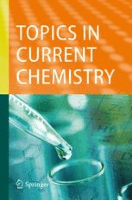
Topics in Current Chemistry
Diving deep into contemporary chemical research.Topics in Current Chemistry is an esteemed peer-reviewed journal published by SPRINGER INT PUBL AG, renowned for its contributions to the field of chemistry. Established in 1974 and currently spanning its convergence through various years, this journal remains pivotal for researchers seeking to explore the latest developments in chemical sciences. With an impressive Q1 classification in the miscellaneous chemistry category and a Scopus rank placing it in the top 10% of its field, it serves as a crucial platform for disseminating high-quality research. The journal’s diverse scope covers a wide array of contemporary chemical topics, catering to a global audience of academic and professional chemists. Although not Open Access, its content can be accessed through institutional subscriptions, ensuring broad reach and engagement within the scientific community. Researchers and students alike will find Topics in Current Chemistry an invaluable resource for keeping abreast of cutting-edge advancements and trends in chemistry.
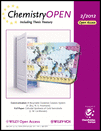
ChemistryOpen
Fostering Collaboration in ChemistryChemistryOpen is a leading open access journal published by WILEY-V C H VERLAG GMBH, dedicated to advancing the field of chemistry. With its ISSN 2191-1363, this journal has been a vital platform since its inception in 2012, promoting unrestricted access to innovative research findings and critical reviews in various chemistry domains. As a testament to its growing influence, ChemistryOpen has achieved a commendable Q2 quartile ranking in the 2023 Chemistry (miscellaneous) category, which highlights its quality and impact within the academic community. Researchers, professionals, and students benefit from the journal's commitment to making high-quality research accessible, facilitating knowledge transfer and collaborative insights among chemists worldwide. The journal's transparent open access model ensures that groundbreaking discoveries and methodologies are readily disseminated, fostering a culture of innovation and interdisciplinary dialogue in the ever-evolving landscape of chemistry.

HELVETICA CHIMICA ACTA
Advancing the Frontiers of Chemical ResearchHELVETICA CHIMICA ACTA, published by WILEY-V C H VERLAG GMBH, stands as a pivotal journal in the fields of chemistry and chemical research. Established in 1918, this esteemed journal spans a diverse array of topics, including biochemistry, catalysis, drug discovery, inorganic and organic chemistry, as well as physical and theoretical chemistry. With influence reflected in its noteworthy Q2 and Q3 quartile rankings across these categories as of 2023, HELVETICA CHIMICA ACTA continues to capture the interest of the global scientific community. Although not an open-access journal, it remains accessible through various academic institutions, ensuring broad reach and collaboration opportunities. Researchers, professionals, and students alike will find its meticulously peer-reviewed articles critical for advancing knowledge and fostering innovation within the chemical sciences. As the journal converges toward 2024, it remains committed to publishing high-quality, impactful research that supports the evolution of chemistry across its multifaceted disciplines.

BIOORGANIC & MEDICINAL CHEMISTRY LETTERS
Connecting disciplines for impactful chemical research.BIOORGANIC & MEDICINAL CHEMISTRY LETTERS, published by PERGAMON-ELSEVIER SCIENCE LTD, is a leading journal in the fields of biochemistry, drug discovery, and medicinal chemistry, designed to disseminate significant advances in these disciplines. Established in 1991, the journal spans various important categories, including Organic Chemistry and Pharmaceutical Science, with its 2023 Scimago Journal Rank placing it at Q2 in Organic Chemistry and Q3 in several other relevant fields. Though not an open-access publication, it provides invaluable insights into contemporary research and innovative methodologies, appealing to researchers, professionals, and students alike. The journal's commitment to quality and relevance makes it a vital resource for those aiming to stay at the forefront of bioorganic and medicinal chemistry developments. For more information, please visit the journal's website as it remains a critical platform for scholarly exchange, particularly for those engaged in interdisciplinary research.
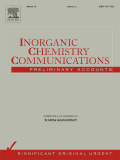
INORGANIC CHEMISTRY COMMUNICATIONS
Pioneering discussions in the evolving landscape of inorganic chemistry.Inorganic Chemistry Communications is a prestigious journal published by Elsevier, catering to the dynamic field of inorganic chemistry and covering critical advancements in materials chemistry and theoretical chemistry. With an impressive H-index which reflects its scholarly influence, the journal has established itself as a vital platform for researchers and professionals alike since its inception in 1998. As of 2023, it ranks in the Q1 category in Inorganic Chemistry and holds strong positions in both Q2 in Materials Chemistry and Q2 in Physical and Theoretical Chemistry, emphasizing its broad scope and relevance across multiple disciplines. The journal is recognized for its significant impact within the academic community, currently positioned in the 67th percentile in Materials Chemistry and the 65th percentile in Inorganic Chemistry. While the journal currently does not offer open access options, it remains a critical resource for those seeking cutting-edge research and discussions in inorganic and materials chemistry. Located in Amsterdam, Netherlands, Inorganic Chemistry Communications continues to promote the exchange of innovative ideas and experimental findings that shape the future of chemical sciences.
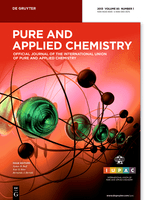
PURE AND APPLIED CHEMISTRY
Exploring Innovations in Chemical EngineeringPURE AND APPLIED CHEMISTRY is a highly regarded journal in the fields of chemical engineering and general chemistry, published by Walter de Gruyter GmbH. Since its inception in 1960, this journal has continued to foster advancements in chemical research and facilitate the dissemination of new knowledge through its rigorous peer-reviewed articles. With an impressive impact factor that places it in Q2 quartile rankings for both Chemical Engineering and Chemistry as of 2023, it holds a significant position in the academic landscape, attracting authors and contributors from around the globe. The journal’s unique focus on the practical applications of chemical research makes it indispensable for researchers, professionals, and students aiming to bridge theoretical knowledge with real-world applications. Although it is not open access, its impact is enhanced by its continued relevance and contributions to the ever-evolving field of chemistry. Researchers and practitioners alike will find in PURE AND APPLIED CHEMISTRY a critical resource for staying updated on key developments and innovative practices in chemistry and chemical engineering.

JOURNAL OF THE INDIAN CHEMICAL SOCIETY
Showcasing the Evolution of Chemical Sciences since 1973Journal of the Indian Chemical Society, published by Elsevier, stands as a cornerstone in the field of chemistry, particularly representing the rich chemical research emanating from India.
With a significant history dating back to its establishment, this journal encompasses diverse disciplines including Drug Discovery, Electrochemistry, Inorganic Chemistry, Organic Chemistry, and Physical and Theoretical Chemistry, reflecting the evolving landscape of chemical sciences.
Despite being positioned in the Q3 category across multiple quarters, the journal demonstrates promising rankings in various chemistries, highlighting its commitment to advancing the knowledge and application of chemical sciences. While currently not available as an open access journal, the Journal of the Indian Chemical Society is dedicated to providing a platform for high-quality research that fosters innovation and collaboration among researchers, professionals, and students worldwide.
With its continuous publication from 1973 to the present, it serves as an essential repository for cutting-edge findings and developments in chemistry, striving to connect academia with industry and practice.

EUROPEAN JOURNAL OF ORGANIC CHEMISTRY
Pioneering Insights in Chemical ResearchThe EUROPEAN JOURNAL OF ORGANIC CHEMISTRY (ISSN: 1434-193X; E-ISSN: 1099-0690), published by WILEY-V C H VERLAG GMBH in Germany, stands as a crucial platform for disseminating innovative research in the fields of organic, physical, and theoretical chemistry. With its inception dating back to 1998 and converging expertise until 2024, this esteemed journal has achieved a notable reputation, earning a Q2 rank in both Organic Chemistry and Physical and Theoretical Chemistry categories as of 2023, indicating its vital contribution to the academic community. Researchers and professionals will benefit from its rigorous peer-reviewed articles, which foster advancement in chemical sciences, while students can leverage its wealth of knowledge to enhance their learning. Although currently not an open-access journal, the content produced is invaluable for those looking to stay at the forefront of chemical research.

Journal of Saudi Chemical Society
Elevating Research Standards in the Chemistry Community.The Journal of Saudi Chemical Society, published by ELSEVIER, stands as a premier platform for advancing knowledge in the field of chemistry. Since its inception in 2009, this Open Access journal has garnered significant attention, securing a prestigious Q1 ranking in the Chemistry (miscellaneous) category for 2023, reflecting its position among the top journals in the discipline. With an impressive Scopus ranking of #66 out of 408 in General Chemistry, this journal boasts a commendable 83rd percentile, underscoring its impact and relevance in the global research community. The journal aims to disseminate high-quality research articles, reviews, and case studies, fostering innovation and collaboration among chemists and allied professionals. By enabling widespread access to cutting-edge research, the Journal of Saudi Chemical Society plays a crucial role in supporting the educational and professional development of students, researchers, and practitioners alike, making it an essential resource for anyone invested in the dynamic field of chemistry.

JOURNAL OF CHEMICAL RESEARCH
Cultivating Excellence in Chemical Scholarship.JOURNAL OF CHEMICAL RESEARCH, published by SAGE PUBLICATIONS LTD, serves as a pivotal platform for scholars and practitioners in the field of Chemistry. With its ISSN 1747-5198 and E-ISSN 2047-6507, this journal has established itself as a reliable source of innovative research since its inception in 2000. The journal's comprehensive scope encompasses various facets of chemical research, providing a broad spectrum of articles that foster scientific advancement and technological innovation. Ranked in the Q3 tier of miscellaneous chemistry journals in 2023, with a Scopus rank of #246 out of 408, it represents a solid outlet for emerging and established researchers alike. Although currently not an open-access journal, its rigorous peer-review process ensures that only high-quality studies are published, catering to the academic and professional community's demand for credible and impactful findings. Positioned in the vibrant research landscape of the United Kingdom, the JOURNAL OF CHEMICAL RESEARCH is dedicated to expanding the frontiers of chemical sciences and is an essential resource for anyone committed to advancing this dynamic field.